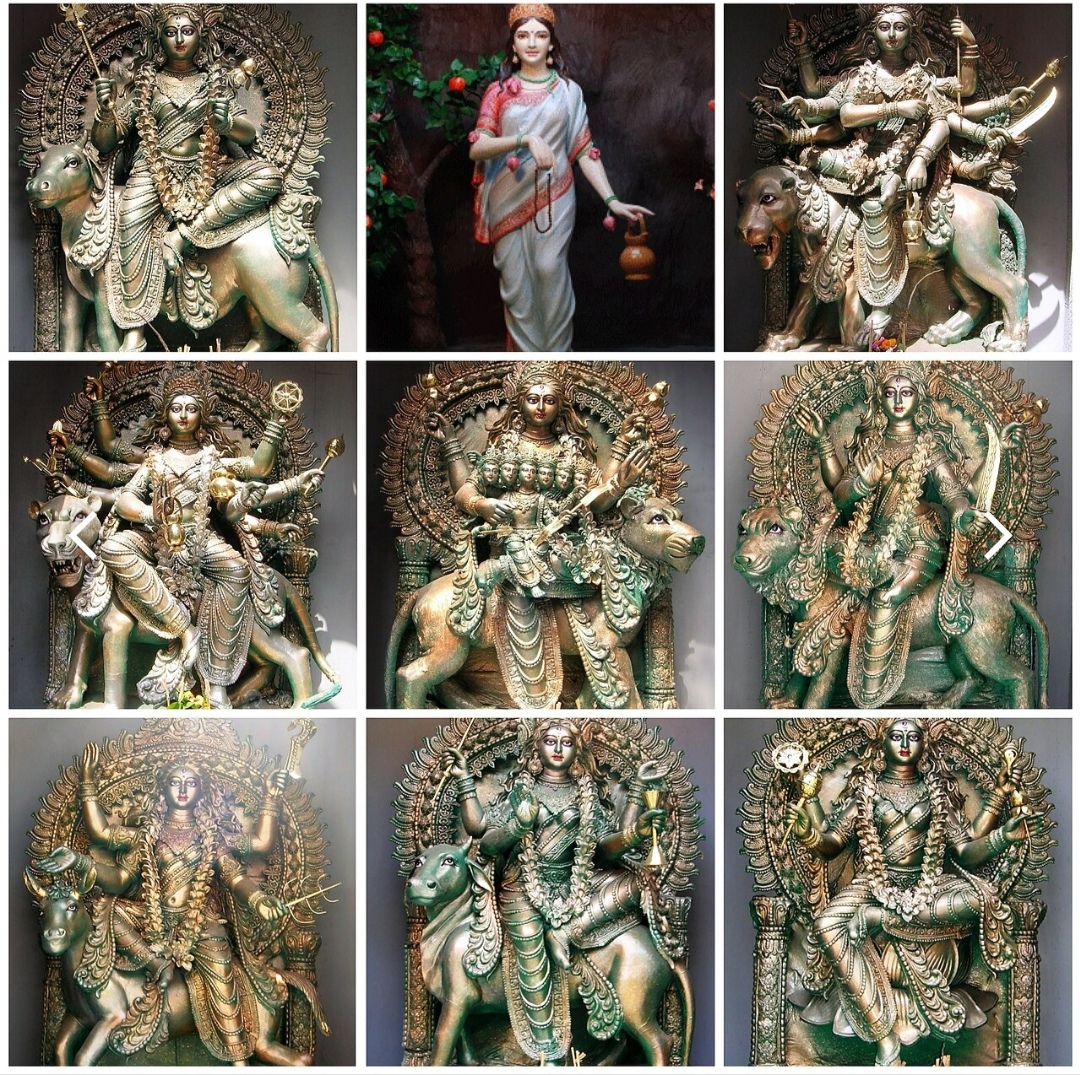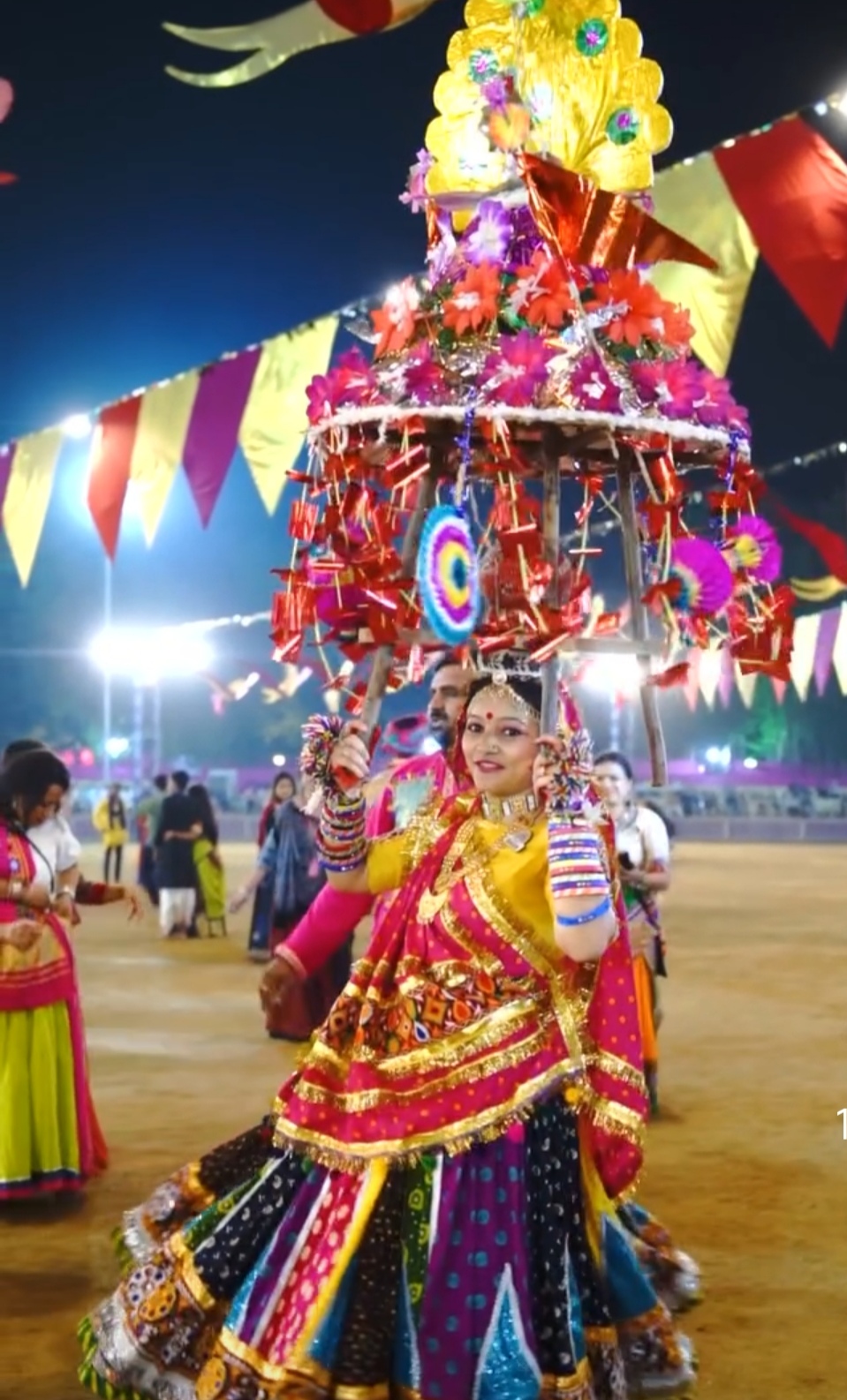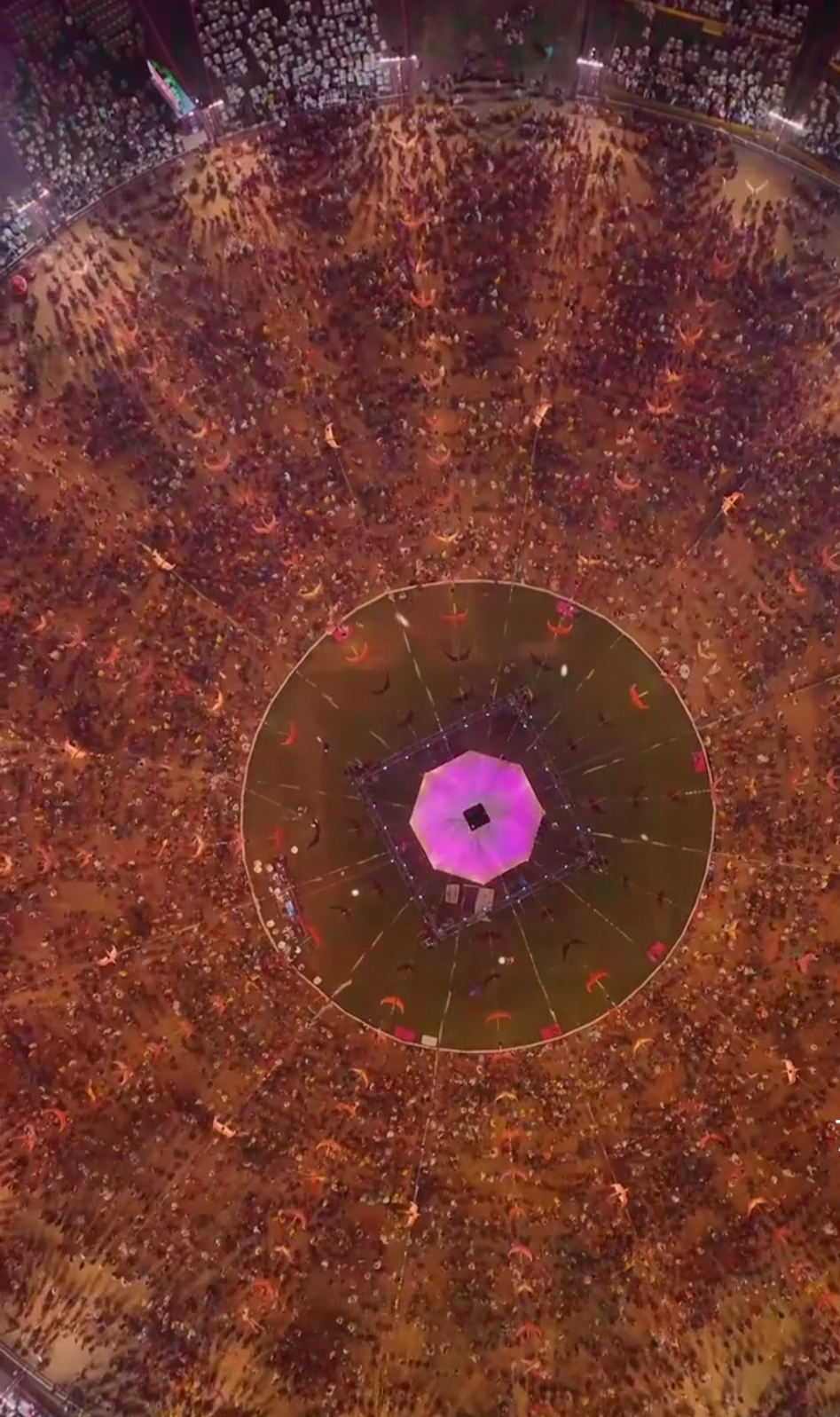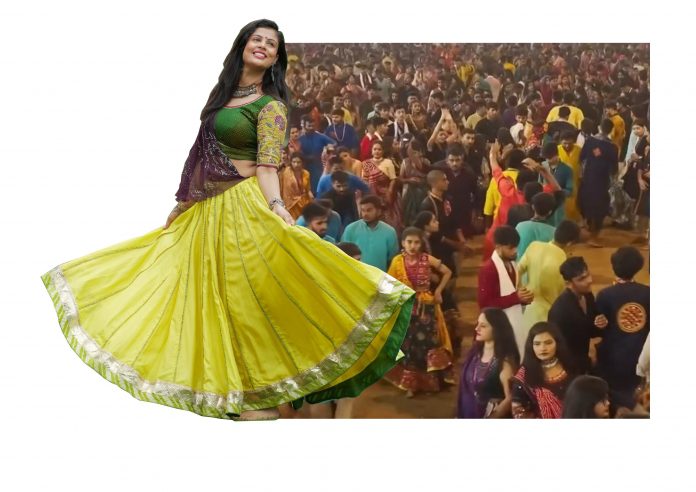GARBA – The dance form celebrates fertility, honours womanhood and pays respect to all nine forms of the mother Goddess. The word Garba originated from the Sanskrit word garbh meaning ‘womb’ – implying gestation or pregnancy. Garba traditionally is a perforated earthen pot called garbi, which is illuminated from inside with a diya. This pot is placed in the centre and women dance around it. Scholars say that the fire is a symbol of fertility. It is lit as a tribute to the female power of Shakti. It is also called garbhadeep and represents the foetus in the womb. The dancers thus honour Durga – the feminine form of the divinity. The circular motion of the dance is said to symbolize life.
Devi Durga is celebrated with great enthusiasm in different parts of the country in her nine forms known as Navdurga.
The nine nights are dedicated to:
SHAILPUTRI – The daughter of mountain, She sits on a Nandi
BHRAMCHARINI – Mother of devotion and penance, in a saintly form
CHANDRAGHANTA – Destroyer of demons, She sits on a tiger
KHUSHMANDA – She is the goddess of cosmic energy
SKANDMATA – The goddess of motherhood and children, She sits on a lion
KATYAYAINI – Taking the form of a warrior, She is the goddess of power
KAALRATRI – The goddess of auspiciousness and courage. She sits on a donkey
MAHAGAURI – Riding an ox, She embodies beauty and women
SIDDHIDATRI – Sitting atop a lotus She is the goddess of supernatural powers
or ‘siddhis.’

The mood of the 9 nights of revelry and celebration leads to the eve of Vijaya Dashmi when the Goddess Durga is said to have defeated the demon Mahisasura. At times a woman takes on a form of the mother goddess and dances vigorously carrying a heavy bamboo mandvi (like a portable shrine) on her head.

This activity has been traced back to more than five hundred years, but the current form is roughly from 1910. Garba singing is primarily devotional songs, sung in praise of the Goddess. According to one source, in olden times, women from the neighbourhood gathered to sing bhajans. Sometimes they got so excited that they started dancing almost unstoppable, like in a trance. Slowly it turned into a community activity and everyone joined in. Even these days, the dancers are almost possessed, because despite dancing continuously for hours together every day with cuts, injuries and bandages on their feet, they don’t complain.
Starting with slow circular movements, the tempo slowly builds up to a frenzied whirling. It has been transmitted across generations in urban and rural areas through practice and performance. The dance fosters socio-economic equality, gender disparity and religious structures. It is inclusive of diverse and marginalized communities too. It’s a cultural celebration unparalleled in sheer size. There are fairs and carnivals around the world but nothing compares with the vibrant colours and festive mood of these nine nights. Many types of folk dances of Gujarat are included like the raas and gope – which is associated with the play of Lord Krishna with the gopis. Raas is a favourite with the pastoral communities like the Ahirs and Bharwads. Navratri also signifies the monsoon harvest.

In villages, the Garbi would be kept in the village square and men, women and children would sing and dance in circles around it ending late in the night with an Aarti. As more and more people joined in the dancers started moving through the streets going round and returning to the central area.
Slowly the music, singing and instruments became more organised. The most popular are the songs written by the poet Javerchand Meghani. Other folk songs joined the list as time went by. Saint Narsinh Mehta is credited to have travelled from place to place listening to various songs and document them, especially the ones which celebrate Radha and Krishna dances like the Raslila…. Overtime more and more songs have been added. These days’ people write songs for this purpose. Last year a song written by Shri Narendra Modi also became popular.
Knowing human nature of one up man ship these community programs became competitive, each one wanted to be bigger and better and draw a larger crowd. The singing became better and bigger groups of musicians came together. The music got louder, the lighting became fancier the decorations more colourful and exotic. The number of dancers increased. More boys and girls joined in with practiced, well-coordinated dance steps in gorgeous and enchanting dresses. The scene has changed completely in the last couple of years. Now it’s big money too.
The Current Scenario
In Gujarat hardly anyone dances to Falguni Pathak and her Disco Dandiya tunes. Dandiya played or danced with two small sticks is reserved only for the last if at all. The singing is very melodious and professional. Each group tries to have its signature songs apart from the very popular ones. The bigger organisers start selling dancer and viewers passes much ahead of the festival. Some boast of more than 40000 people dancing at a time! In the centre is a raised pandal for the musicians and singers which is often a team of 15 to 20 people if not more. Male and female lead singers and other orchestra. The deity is given a prominent mandir like pandal on the outer periphery of the huge circle.
Business houses are roped in for donations in lieu of which they are invited to do the day’s Aarti which is considered a big honour. There are competitions every day and big prizes given to best dancers and best dressed dancers in different categories. The prices of viewers’ seasonal passes can range from Rs.4000/- to Rs.12000/-

Garba continues to be a vibrant living tradition in addition to being an annual religious ritual. It’s a festival, it’s a celebration like none other. Many foreigners also plan a trip to Gujarat during this period so they can participate and enjoy as much as possible. In recent years it has become a tourist attraction too. People buy and wear different outfits for all days in gorgeous colours with fancy accessories. Even the male dancers are decked up from head to toe in colourful turbans and magnificent outfits with embroidery and embellishments of different sorts, each one more impressive than the other.

The Bollywood Boost
Some recent Bollywood film songs have given a big boost to choreographed dance moves and dressing styles. Dholida, Limbuda, Nagada Sand Dhol,
Lahu Munh Lag Gaya, Radha Teri Chunari, Dholi Taro Dhol, Chogada Tara- Chabila Tara, are all very popular apart from the traditional ones.
The UNESCO recognition
In 2023, after years of efforts, at its 18th. Session held in Botswana, Gujarat’s Garba finally found a place in the list of Intangible Cultural Heritage (ICH) of Humanity by UNESCO’s Intergovernmental Committee. The dossier for proposal submission by the Govt. of India, was largely prepared in the cultural capital of Gujarat – Vadodara. This year a team from the National Geographic Society is coming to cover the festival.
Just by reading and seeing pictures, one cannot imagine the magnitude of the revelry. You have to see and feel to believe. Plan a trip for next year……








